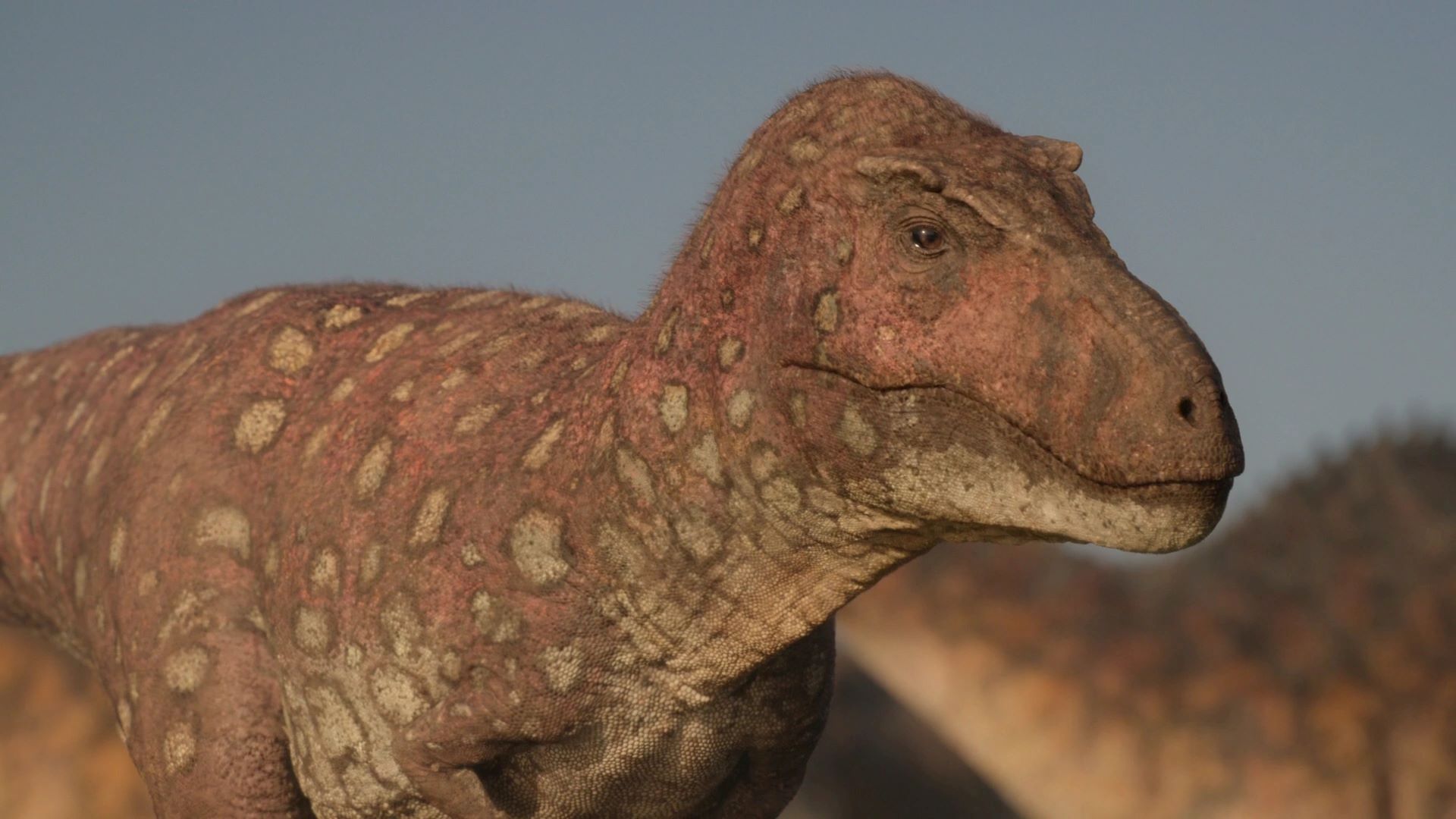
Tarbosaurus, also known as the “Almighty Lizard,” is a fascinating creature that roamed the Earth during the Late Cretaceous period. This fearsome dinosaur belonged to the Tyrannosauridae family, making it a close relative of the infamous Tyrannosaurus rex. Tarbosaurus was a massive predator, with a length of up to 40 feet and a weight of around 4 to 5 tons. Its sharp teeth, incredible agility, and strong jaws made it a formidable hunter.In this article, we will uncover 15 intriguing facts about the Tarbosaurus, shedding light on its behavior, physical features, and its place in the prehistoric world. So, get ready to dive into the world of this mighty dinosaur, and discover what made it such a fearsome creature during its time on Earth.
Key Takeaways:
- The Tarbosaurus, a fearsome predator of the Late Cretaceous period, was a massive, agile, and social dinosaur with a powerful bite and a close relationship to the famous Tyrannosaurus rex.
- Fossil discoveries in Asia have provided valuable insights into the behavior, appearance, and social structure of the Tarbosaurus, shedding light on its role in the diverse prehistoric ecosystem.
The Tarbosaurus: King of the Late Cretaceous Period
During the Late Cretaceous period, Tarbosaurus reigned supreme as one of the most dominant predators. Its name translates to “alarming lizard,” and it certainly lived up to its fearsome reputation.
Massive Size and Intimidating Appearance
Tarbosaurus was a massive carnivorous dinosaur, measuring up to 40 feet long and weighing around 5 tons. Its strong, muscular body and sharp, serrated teeth made it a formidable hunter.
Close Relative of Tyrranosaurus rex
Tarbosaurus is often referred to as the Asian cousin of Tyrannosaurus rex. Both dinosaurs shared similar physical features, with the Tarbosaurus being slightly smaller in size.
Powerful Jaws and Razor-Sharp Teeth
Tarbosaurus had a robust skull and a mouth full of long, curved teeth. Its strong jaws and sharp teeth were designed to grip and tear through the flesh of its prey.
Speed and Agility
Despite its massive size, Tarbosaurus was surprisingly agile. It could run at speeds of up to 30 miles per hour, enabling it to chase down its fleeing victims with ease.
Diet and Feeding Habits
Tarbosaurus was a carnivorous dinosaur with a voracious appetite. Its diet mainly consisted of other dinosaurs, including herbivores like hadrosaurs and ceratopsians.
Fossils Discovered in Asia
The majority of Tarbosaurus fossils have been found in Asia, specifically in Mongolia and China. These discoveries have provided valuable insights into the behavior and anatomy of this prehistoric predator.
Sociable Behavior
Evidence suggests that Tarbosaurus had a social structure similar to that of other large predators. They likely lived and hunted in groups, working together to take down larger prey.
Feathers and Scales
Recent findings indicate that Tarbosaurus, like many other theropod dinosaurs, may have possessed a combination of feathers and scales. This suggests that they had a mix of insulation and display purposes.
Living in a Diverse Ecosystem
Tarbosaurus shared its habitat with a wide variety of other dinosaurs and prehistoric creatures. This diverse ecosystem created a competitive environment for survival and resources.
Parental Care
Studies have revealed indications of parental care within the Tarbosaurus species. Fossil evidence suggests that they may have protected and nurtured their young in nests.
Extinction and Fossil Record
Like many other dinosaur species, Tarbosaurus became extinct around 65 million years ago. Fossil remains have given paleontologists valuable clues about the life and demise of this mighty predator.
The Influence of Tarbosaurus in Popular Culture
Tarbosaurus has captured the imagination of the general public and has been featured in various movies, documentaries, and video games, further perpetuating its legacy.
Paleontological Research and Discoveries
Ongoing research and new fossil discoveries continue to shed light on the biology, behavior, and evolutionary significance of the Tarbosaurus.
Conservation and Preservation
Although the Tarbosaurus is long extinct, the fossils that have been found are vital for scientific study and understanding of Earth’s ancient history. The preservation of these fossils ensures that future generations can learn from these magnificent creatures.
In conclusion, the Tarbosaurus was a formidable predator of the Late Cretaceous period, ruling its territory with unmatched power and strength. Its massive size, sharp teeth, and agile nature made it a force to be reckoned with. Through the fossil record and ongoing research, we continue to unravel the mysteries of this incredible dinosaur and gain insight into the ancient world it inhabited.
Conclusion
Tarbosaurus, also known as the Asian cousin of Tyrannosaurus rex, was a fascinating dinosaur species that roamed the Earth millions of years ago. From its massive size to its predatory nature, this creature captivates the imagination of both scientists and dinosaur enthusiasts alike.
Throughout this article, we have explored 15 interesting facts about Tarbosaurus. We discovered that it was one of the largest carnivorous dinosaurs, measuring up to 40 feet in length and weighing around 4-5 tons. Its sharp teeth and strong jaws made it a formidable predator in its ecosystem.
Additionally, Tarbosaurus had a keen sense of smell, which it used to locate its prey. It also possessed strong hind limbs, allowing it to chase its targets with great agility. Fossil evidence suggests that Tarbosaurus may have hunted in packs, making it an even more formidable predator on the prehistoric landscape.
Overall, Tarbosaurus offers us a glimpse into the diversity and power of the dinosaurs that once ruled the Earth. Studying these ancient creatures helps us piece together the puzzle of our planet’s history and fosters a sense of awe and wonder at the natural world.
FAQs
Q: How big was Tarbosaurus?
A: Tarbosaurus was one of the largest carnivorous dinosaurs, measuring around 40 feet in length and weighing approximately 4-5 tons.
Q: Where did Tarbosaurus live?
A: Tarbosaurus lived in what is now modern-day Mongolia, China, and parts of Asia during the Late Cretaceous period.
Q: What did Tarbosaurus eat?
A: Tarbosaurus was a carnivorous dinosaur and primarily fed on other dinosaurs and smaller animals that inhabited its ecosystem.
Q: Did Tarbosaurus hunt in packs?
A: Fossil evidence suggests that Tarbosaurus may have hunted in packs, similar to its more famous relative, Tyrannosaurus rex.
Q: How did Tarbosaurus defend itself?
A: Tarbosaurus had sharp teeth and strong jaws, which were its primary means of defense and hunting.
Was this page helpful?
Our commitment to delivering trustworthy and engaging content is at the heart of what we do. Each fact on our site is contributed by real users like you, bringing a wealth of diverse insights and information. To ensure the highest standards of accuracy and reliability, our dedicated editors meticulously review each submission. This process guarantees that the facts we share are not only fascinating but also credible. Trust in our commitment to quality and authenticity as you explore and learn with us.


